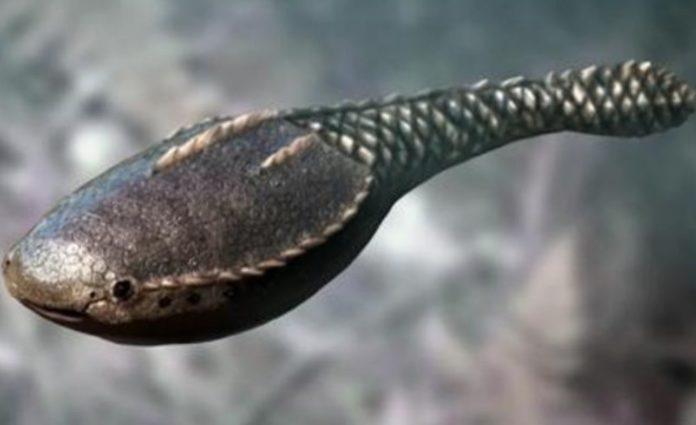A team of scientists investigates what caused the mass extinction of life 445 million years ago.
The dinosaurs, along with a vast number of other species, vanished some 66 million years ago as a result of a meteorite impacting what is now Mexico. That is the most well-known mass extinction, but it is far from the only one that has put life on Earth in jeopardy.
There have been five significant mass extinctions, collectively known as the ‘big five,’ during which at least three-quarters of all species on the earth have perished.
Furthermore, many scientists believe that, as a result of global warming and climate change, we have already reached the sixth.
It’s critical for scientists to figure out what caused these mass extinctions because understanding the natural conditions that led to the extinction of most species in the past could help prevent the possibility of the same disaster in the future.
An international team of researchers from the US, France, Mexico, and Canada analyzed the earliest of the ‘big five’, the Late Ordovician (LOME), which happened around 445 million years ago. During that time, 85 percent of marine species, the majority of which resided in shallow oceans near continents, vanished. The main reason, the team concluded, is related to the cooling of the climate.
Alexandre Pohl (currently a postdoctoral research fellow at Université Bourgogne Franche-Comté in Dijon, France) and his co-authors looked at the ocean environment before, during, and after the extinction to see how it was brewed and triggered.
The oceans were alive with species throughout the Ordovician time. The oceans had some of the first animal-created reefs, but they lacked a significant population of vertebrates.
“If you had gone snorkeling in an Ordovician sea you would have seen some familiar groups like clams and snails and sponges, but also many other groups that are now very reduced in diversity or entirely extinct like trilobites, brachiopods and crinoids” says Finnegan, a professor at UC Berkeley.
Unlike sudden mass extinctions, like as the Cretaceous-Tertiary extinction event, which occurred 65.5 million years ago, Finnegan claims that LOME occurred over a long period of time, with estimates ranging from less than half a million to over two million years.
One of the most heated debates regarding LOME is whether the shortage of oxygen in seawater contributed to the period’s mass extinction. The researchers used geochemical testing with numerical calculations and computer models to answer this topic.
Professor Zunli Lu of Syracuse University’s Department of Earth and Environmental Sciences and his students measured the iodine concentration in carbonate rocks from that time period, revealing valuable insights about oxygen levels at various ocean depths. Iodine concentrations in carbonate rocks serve as a proxy for changes in ocean oxygen levels throughout Earth’s history.
Their findings, when combined with computer modelling simulations, suggested that there was no evidence of worsening anoxia, or a lack of oxygen, during the extinction event in the shallow ocean animal habitat where most organisms lived, implying that LOME was most likely caused by a cooling of the climate during the late Ordovician period, in combination with other factors.
According to climate modelling expert Alexandre Pohl, there is evidence that anoxia in the deep seas expanded at the same period, a mystery that cannot be explained by the conventional model of ocean oxygen.
“Oxygenation of the upper ocean layer in response to “Upper-ocean oxygenation in response to cooling was anticipated, because atmospheric oxygen preferentially dissolves in cold waters,” says Pohl, adding, “However, we were surprised to see expanded anoxia in the lower ocean since anoxia in Earth’s history is generally associated with volcanism-induced global warming.”
Deep-sea anoxia is attributed to the circulation of seawater through the world’s oceans. One thing to remember, according to Pohl, is that ocean circulation is a critical part of the climate system.
The results of the computational model demonstrate that global warming changed the ocean’s circulation pattern, preventing the passage of oxygen-rich water from shallow waters to the deeper ocean. Recognizing that climate change can lead to lower oxygen levels in some sections of the ocean is a significant element of Lu’s research, according to him.
“For decades, the prevailing school of thoughts in our field is that global warming causes the oceans to lose oxygen and thus impact marine habitability, potentially destabilizing the entire ecosystem,” Lu says. “In recent years, mounting evidence point to several episodes in Earth’s history when oxygen levels also dropped in cooling climates.”
While the root cause of the late Ordovician extinction are still being debated, the team’s research eliminates oxygenation changes as a sole explanation for the extinction and provides additional evidence to support the theory that LOME died due to a shift in temperature.
Pohl believes that if more climate data and powerful numerical models become available, they will be able to provide a more accurate picture of the causes that may have contributed to the late Ordovician mass extinction.
The findings of the study were published in the journal Nature Geoscience. DOI: 10.1038/s41561-021-00843-9
Image Credit: an armoured fish. N. Tamura
You were reading: What triggered the first mass extinction on Earth? – it’s not over yet
